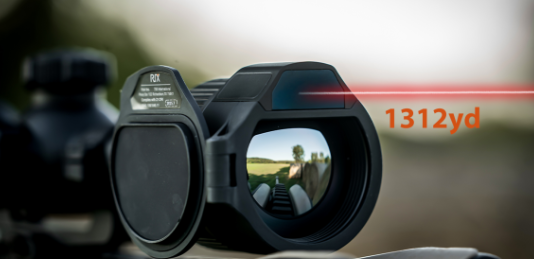Claiming that one or the other model is the “best thermal scope” available is difficult because of the inherent subjectivity of it all.
What will you be using it to hunt? What will the conditions be like? And what sorts of other features do you need? All of these and more will go into the purchase decision.
That being the case, here are some things to evaluate when you’re looking for a thermal scope.
- Thermal sensor resolution: The higher the thermal sensor resolution, the higher the display image will be, holding all other factors equal. A higher thermal sensor resolution will also increase the price, however.
- Pixel pitch: Pixel pitch is another technical specification that influences how crisp and clear the image will be; the smaller the pixel pitch, the better, and it will produce both a clearer image and result in a much faster scope. Therefore, as pixel pitch decreases, the less lag there will be and the less you will need to lead the target. Most thermal rifle scopes have pixel pitches of either 17μm or 12μm, with one scope, the iRay HCH50R, having a 10μm pixel pitch, making it the industry’s fastest thermal scope.
- NETD rating: NETD rating indicates how effective a thermal rifle scope is at identifying temperature differentials, and as with pixel pitch, the lower the NETD rating is, the better. A lower NETD rating will yield a clearer, sharper image, and will be better in adverse conditions, such as in hot or wet weather.
- Frame rate: Frame rate, also known as refresh rate, is measured in Hertz and indicates how fast the scope is. The higher the frame rate, the less lag there will be, which can be critical for leading a moving target.
- Display resolution: Display resolution gives an indication of how detailed the sight picture on the display will be. As with the sensor resolution, the higher this number is, the better. Generally, more detailed resolutions are more expensive, too.
- IP rating: IP rating indicates how effectively a thermal scope can resist ingress from dust or water. The higher the better, and most quality thermal scopes are fully waterproof, at least in the rain, which is critical since they will be used outside in the elements. The higher the better.
- Recoil rating: A higher recoil rating is not necessarily critical if you are hunting with a light, intermediate cartridge like .223 or 5.56 but if you are shooting 12 gauge slugs or hunting with a larger caliber rifle, a higher recoil rating is better.
- Onboard audio and video calculation: Some thermal scopes can take pictures and recoil video, and some even feature recoil-activated recording.
- Onboard storage: Most quality thermal scopes are advanced electronics that have some onboard storage for the audio, video and photo files you can capture.
- Does it have a rangefinder? Some of the best thermal scopes have integrated laser rangefinders, so you can accurately estimate just how far off your intended target is before you commit to a shot.

- Does it have a ballistic calculator? Never guess at the range of your target again; the best thermal scopes have onboard ballistic calculators so you can estimate just where your shot will land.
- What is the detection range? Some thermal scopes are better at greater ranges, making them more effective for engaging very wary target species, such as predators that may hesitate to get within a few hundred yards.
- Form factor and controls: The best thermal scopes feature intuitive buttons and basic control knobs that are easy to find and engage in the dark.
- What’s the battery life? Many high-quality thermal scopes have battery lifespans that will last more than 6 hours, and some can even be powered from onboard and replaceable batteries so you can hot-swap in the dark, so you don’t lose power at a critical moment.
- Operating temperature range: The best quality thermal scopes have wide operating temperature ranges so that you don’t have to worry about a scope not performing in extreme cold or heat.
- Size and weight: All in all, you may want a smaller thermal scope with a lighter design so that it doesn’t impact your overall carry footprint or gear loadout too dramatically.
What Are Some of the Best Thermal Scopes in the Industry Right Now?
If you want a short list of some of the best thermal scopes on the market right now, here’s a good place to start:
- Nocpix ACE S60R
- Nocpix ACE H50R
- Nocpix Rico 2 S75R
- iRay HCH50R (the industry’s first 10μm thermal scope)
- RIX L3R and L6R
- RIX DBH D6
- RIX Storm S3R and S6R
Start with these, see if any of their features or specifications meet your expectations, and go from there.
Need a Personalized Recommendation?
Not sure which is the best thermal scope for you? Get in touch with Dark Night Outdoors at 309-781-8421, We will take the time to get you into the right scope the first time and we Guarantee what we recommend! let us know what you’ll be hunting, where, style of rifle (AR or Bolt Action) and we’ll make specific recommendations and keep you on budget.


